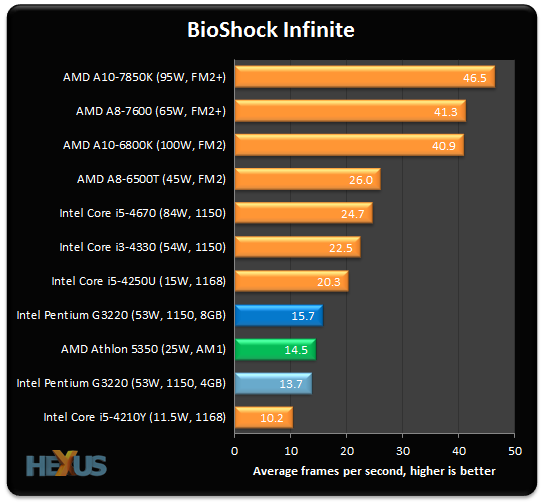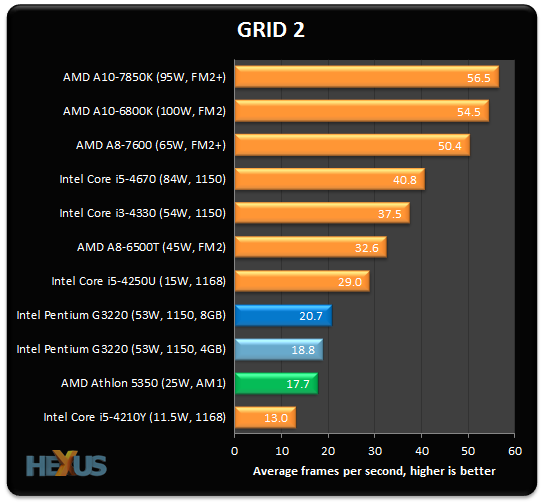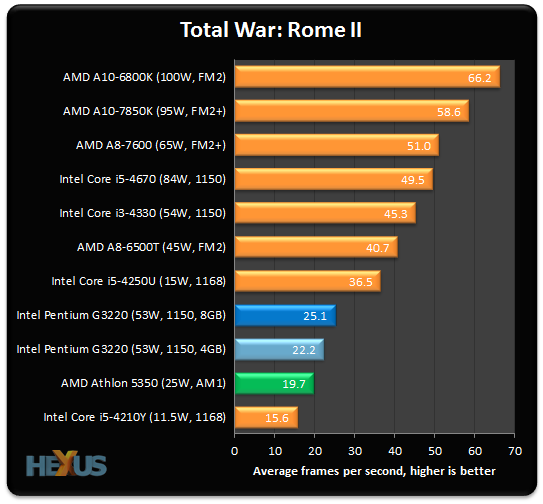Benchmarks: Gaming

As expected, the entry-level IGP included in the Pentium G3220 struggles to play modern games, even at a basic 720p resolution.

Making use of dual-channel memory sees, on average, IGP performance increase by 12.6 per cent. Handy to know, though that's not quite enough to deliver smooth 720p gameplay.

Total War: Rome II tells us more of the same. Intel HD Graphics will suffice for multimedia usage, but for serious gaming you're going to want to consider a discrete graphics card.
But what sort of performance can you expect in such a scenario? To find out, we paired the Pentium G3220 with a mid-range Gigabyte GeForce GTX 750 Ti WindForce graphics card that is readily available for around £110. To make things interesting, we've tested using the latest available Nvidia drivers (337.50 beta) with varying amounts of system RAM - 4GB (single-channel), 8GB (dual-channel) and 16GB (dual-channel). Putting another permutation into the mix, we're also comparing GTX 750 Ti performance with our high-end graphics test bench, powered by a vastly more potent Core i7-4770K.
1080p Graphics Performance - Gigabyte GTX 750 Ti WindForce |
|||||
|---|---|---|---|---|---|
| Image Preset | Intel Pentium G3220 (4GB) |
Intel Pentium G3220 (8GB) |
Intel Pentium G3220 (16GB) |
Intel Core i7-4770K (16GB) |
|
| 3DMark (score) | Fire Strike | 3,616 |
3,611 |
3,624 |
4,122 |
| BioShock Infinite (avg fps) | Maximum Quality | 47.9 |
47.8 |
47.9 |
48.3 |
| GRID 2 (avg fps) | 4xMSAA, Ultra Quality | 51.2 |
51.3 |
51.2 |
53.9 |
| Total War: Rome II (avg fps) | Very High Quality | 46.7 |
47.0 |
46.9 |
52.8 |
Now that's interesting. When the onus is put on a discrete graphics card such as the GTX 750 Ti, our chosen games show very little benefit in running either more RAM or a much faster processor. We'd be more than happy to game at 1080p on a Pentium G3220 build with just 4GB of system memory and a mainstream discrete graphics card.









